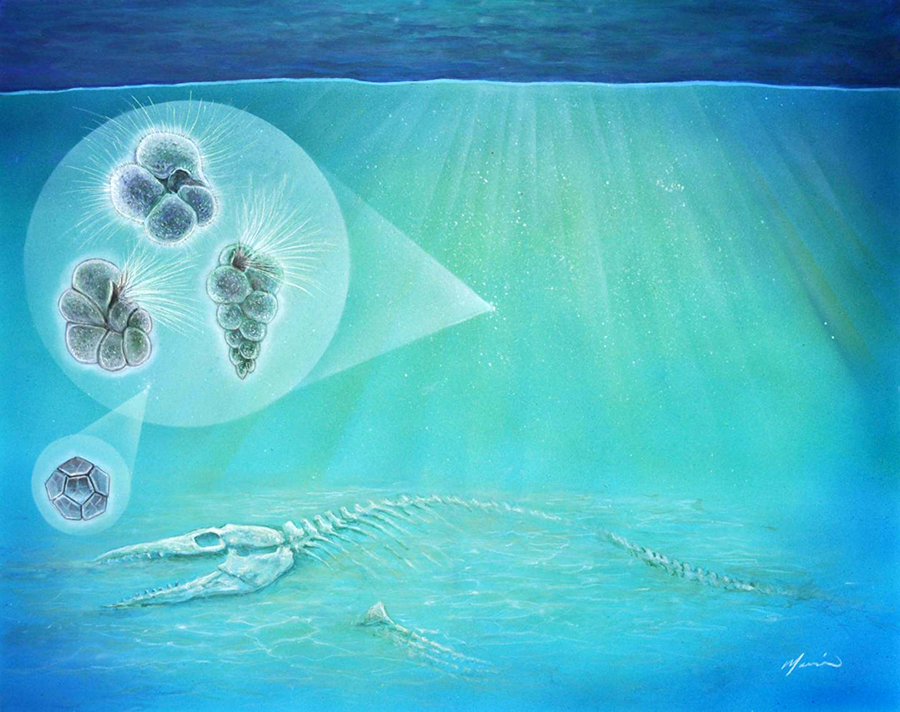Sea Life Recovered Surprisingly Rapidly at Impact Crater of Dino-Killing Asteroid

The Cretaceous/Paleogene mass extinction ended the reign of the dinosaurs and wiped out 76% of species on Earth. It was caused by the impact of an asteroid in the southern Gulf of Mexico approximately 66 million years ago, forming the Chicxulub impact crater. Although the asteroid killed off species, new research has found that the crater it left behind was home to sea life less than a decade after impact, and it contained a thriving ecosystem within 30,000 years.
A research team led by University of Texas Institute for Geophysics scientist Chris Lowery found the first evidence for the appearance of life two to three years after impact.
By 30,000 years after impact, a thriving ecosystem was present in the Chicxulub crater, with blooming phytoplankton supporting a diverse community of organisms in the surface waters and on the seafloor.
In contrast, other areas around the world, including the North Atlantic and other areas of the Gulf of Mexico, took up to 300,000 years to recover in a similar manner.
“We found life in the crater within a few years of impact, which is really fast, surprisingly fast. It shows that there’s not a lot of predictability of recovery in general,” Dr. Lowery said.
The evidence comes primarily in the form of microfossils — the remains of unicellular organisms such as algae and plankton — as well as the burrows of larger organisms discovered in a rock extracted from the Chicxulub crater during recent scientific drilling conducted jointly by the International Ocean Discovery Program and International Continental Drilling Program.
“Microfossils let you get at this complete community picture of what’s going on,” Dr. Lowery said.
“You get a chunk of rock and there’s thousands of microfossils there, so we can look at changes in the population with a really high degree of confidence… and we can use that as kind of a proxy for the larger scale organisms.”
The core containing the fossil evidence was extracted from the Chicxulub crater during a 2016 expedition.
Whereas core samples from other parts of the ocean hold only millimeters of material deposited in the moments after impact, the section from the crater used in this study contains more than 426 feet (130 m) of such material, the upper 30 inches (76 cm) of which settled out slowly from the turbid water. This material provides a record that captures the seafloor environment days to years after the impact.
“You can see layering in this core, while in others, they’re generally mixed, meaning that the record of fossils and materials is all churned up, and you can’t resolve tiny time intervals,” said co-author Professor Timothy Bralower, of Pennsylvania State University.
“We have a fossil record here where we’re able to resolve daily, weekly, monthly, yearly changes.”
The relatively rapid rebound of life in the crater suggests that although the asteroid caused the extinction, it didn’t hamper recovery.
The researchers point to local factors, from water circulation to interactions between organisms and the availability of ecological niches, as having the most influence on a particular ecosystem’s recovery rate.
The findings, published in the journal Nature, indicate that recovery after a global catastrophe could be a local affair.
_____
Christopher M. Lowery et al. Rapid recovery of life at ground zero of the end-Cretaceous mass extinction. Nature, published online May 30, 2018; doi: 10.1038/s41586-018-0163-6
Source: www.sci-news.com








